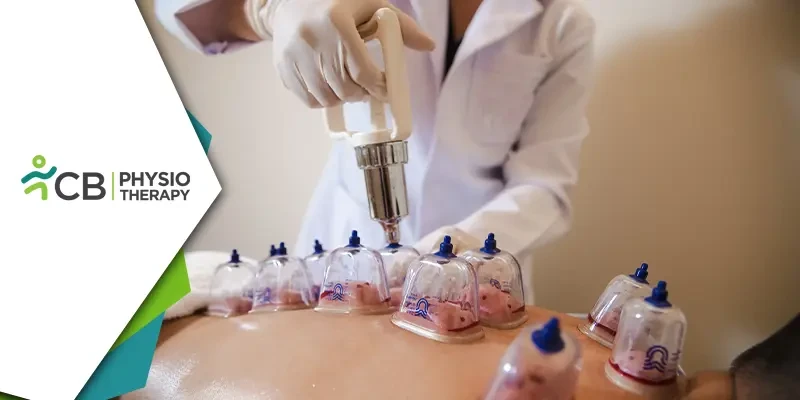In the vast landscape of alternative therapies, Hijama, also known as cupping therapy, has emerged as a time-honored practice with roots deeply embedded in traditional medicine. Originating from ancient civilizations, Hijama involves the application of cups to the skin to create suction, promoting blood flow and facilitating the body's natural healing processes. While its historical significance is undeniable, modern healthcare practitioners, including physiotherapists, are now exploring the potential of Hijama as a complementary approach in treating various medical conditions.
Understanding Cupping Therapy(Hijama)
Hijama, an Arabic term for "sucking," involves placing cups on specific points of the body and creating a vacuum by either suction or heat. The cups may be made of glass, bamboo, or silicone, and the suction effect draws blood to the surface of the skin. This process is believed to stimulate the flow of vital energy, remove toxins, and enhance the body's innate healing mechanisms.How Physiotherapists Can Incorporate Cupping Therapy(Hijama)?
Physiotherapists, as healthcare professionals specializing in physical rehabilitation, can integrate Hijama into their treatment plans to complement conventional therapies. While it's essential to approach this ancient technique with a scientific mindset, there is an increasing body of evidence supporting its efficacy in managing various medical conditions.1: Pain Management
Physiotherapists frequently encounter patients with chronic pain conditions, such as musculoskeletal disorders and arthritis. Hijama has demonstrated its effectiveness in relieving pain by promoting blood circulation and reducing inflammation. When used in conjunction with physiotherapy, cupping therapy can amplify the benefits of exercises and manual techniques, providing patients with a holistic approach to pain management.
2: Improved Circulation
Hijama enhances blood circulation by encouraging the movement of stagnant blood and facilitating the flow of oxygen and nutrients to tissues. Physiotherapists can strategically apply cupping therapy to areas with compromised blood supply, aiding in the restoration of normal circulation. This can be particularly beneficial in the rehabilitation of patients recovering from injuries or surgeries.
3: Muscle Relaxation
Tense and tight muscles are common issues addressed in physiotherapy. Hijama's ability to induce muscle relaxation can complement the efforts of physiotherapists in promoting flexibility and range of motion. By placing cups on specific muscle groups, therapists can enhance the effectiveness of stretching exercises and manual therapy techniques.
4: Rehabilitation after Injuries
In the realm of sports physiotherapy, injuries are an inevitable part of the game. Cupping therapy has shown promise in expediting the healing process of soft tissue injuries, such as strains and sprains. Physiotherapists can integrate Hijama into the rehabilitation program to accelerate recovery, reduce pain, and prevent the development of scar tissue.
5: Stress Reduction and Mental Well-being
The connection between physical and mental health is well-established. Physiotherapists can use Hijama to address not only physical ailments but also to promote relaxation and reduce stress. The calming effects of cupping therapy contribute to an overall sense of well-being, which is integral to the holistic approach of physiotherapy.
6: Respiratory Conditions
Cupping therapy has been employed to address respiratory conditions, such as asthma and bronchitis. Physiotherapists can use Hijama to target specific points on the chest and back, promoting lung function and alleviating respiratory distress. Combined with respiratory exercises, cupping therapy can become a valuable adjunct in managing these conditions.
7: Enhanced Detoxification
One of the traditional beliefs associated with Hijama is its ability to detoxify the body by eliminating harmful substances. While the scientific evidence supporting this claim is still evolving, physiotherapists can explore the potential of cupping therapy as part of a comprehensive approach to support the body's natural detoxification processes.
The integration of Cupping Therapy(hijama) into physiotherapy represents a harmonious blending of ancient wisdom and modern science. Physiotherapists, as advocates of evidence-based practice, can explore the therapeutic benefits of cupping therapy in managing a spectrum of medical conditions. By adopting a multidimensional approach that combines the principles of physiotherapy with the holistic aspects of Hijama, practitioners have the potential to offer patients a more comprehensive and effective treatment experience.
However, physiotherapists must approach the integration of Cupping Therapy(hijama) with caution, ensuring that it aligns with ethical standards and evidence-based practices. As research continues to unfold, the collaboration between traditional therapies and modern healthcare may pave the way for a more integrated and patient-centered approach to rehabilitation and well-being.

